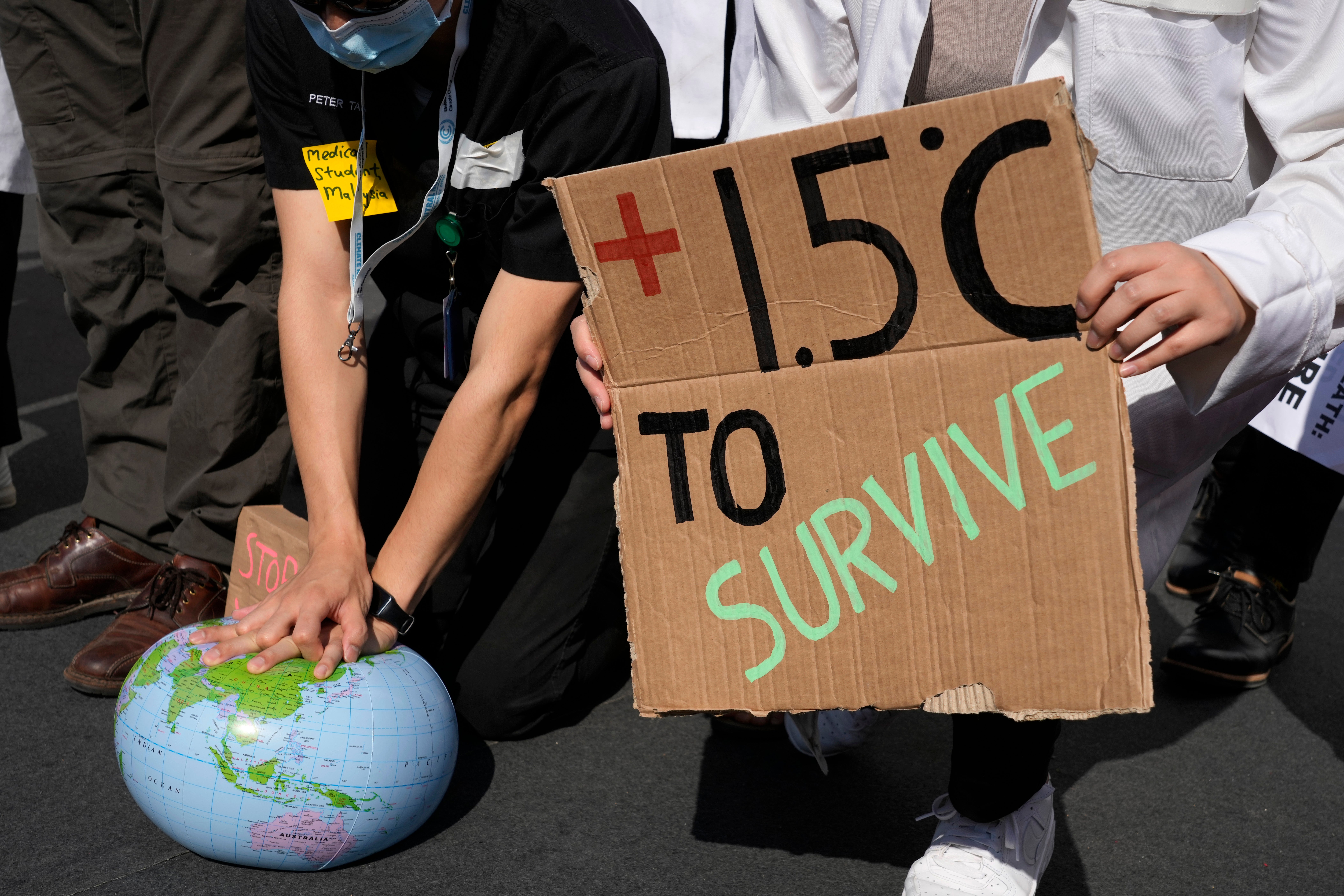AI: World likely to hit key warming threshold in 10-12 years
A new study using artificial intelligence finds that the world will likely warm a few more tenths of a degrees within the next 10 to 12 years and breach a key climate change threshold

Your support helps us to tell the story
From reproductive rights to climate change to Big Tech, The Independent is on the ground when the story is developing. Whether it's investigating the financials of Elon Musk's pro-Trump PAC or producing our latest documentary, 'The A Word', which shines a light on the American women fighting for reproductive rights, we know how important it is to parse out the facts from the messaging.
At such a critical moment in US history, we need reporters on the ground. Your donation allows us to keep sending journalists to speak to both sides of the story.
The Independent is trusted by Americans across the entire political spectrum. And unlike many other quality news outlets, we choose not to lock Americans out of our reporting and analysis with paywalls. We believe quality journalism should be available to everyone, paid for by those who can afford it.
Your support makes all the difference.The world will likely breach the internationally agreed-upon climate change threshold in about a decade, and keep heating to break through a next warming limit around mid-century even with big pollution cuts, artificial intelligence predicts in a new study that's more pessimistic than previous modeling.
The study in Monday’s journal PNAS reignites a debate on whether it's still possible to limit global warming to 1.5 degrees Celsius, as called for in the 2015 Paris climate agreement, to minimize the most damaging effects of climate change. The world has already warmed 1.1 or 1.2 degrees since pre-industrial times, or the mid-19th century, scientists say.
Two climate scientists using machine learning calculated that Earth will surpass the 1.5 degree (2.7 degrees Fahrenheit) mark between 2033 and 2035. Their results fit with other, more conventional methods of predicting when Earth will break the mark, though with a bit more precision.
“There will come a time when we call the 1.5C target for maximum warming dead, beyond the shadow of a doubt,” Brown University environment institute director Kim Cobb, who wasn’t part of the study, said in an email interview. “And this paper may be the beginning of the end of the 1.5C target.”
Stanford University's Noah Diffenbaugh, a study co-author, said the world is on the brink of the 1.5-degree mark in “any realistic emissions reduction scenario.” Avoiding a 2-degree rise, he said, may depend on nations meeting zero-emissions goals by the middle of this century.
The artificial intelligence-based study found it unlikely that temperature increase could be held below 2 degrees Celsius, even with tough emissions cuts. And that’s where the AI really differs with scientists who had been forecasting using computer models that are based on past observations, Diffenbaugh said.
In a high-pollution scenario, the AI calculated, the world would hit the 2-degree mark around 2050. Lower pollution could stave that off until 2054, the machine learning calculated.
In contrast, the United Nations’ Intergovernmental Panel on Climate Change figured in its 2021 report that the same lower-pollution scenario would see the world pushing past 2 degrees sometime in the 2090s.
Cornell University climate scientist Natalie Mahowald, who wasn’t part of the Diffenbaugh study but was part of the IPCC, said the study makes sense, fits with what scientists know, but seems a bit more pessimistic.
There’s a lot of power in using AI and in the future that may be shown to produce better projections, but more evidence is needed before concluding that, Mahowald said.
Normally, climate scientists use a bunch of computer model simulations, some running hot and some cold, and then try to figure out which ones are doing the best job. That's often based on how they performed in the past or in simulations of the past, Diffenbaugh said. What the AI does is more keyed to the climate system now, he said.
“We’re using this very powerful tool that is able to take information and integrate it in a way that no human mind is able to do, for better or for worse,” Diffenbaugh said.
Each year, government climate negotiators at a United Nations summit proclaim that they have managed to “keep 1.5 alive.” But with the latest study there’s a divide among scientists on how true that really is. Diffenbaugh said there’s been so much warming already that it really doesn’t matter how pollution is cut in the next several years, the world will hit 1.5, the AI figures.
Zeke Hausfather of the tech company Stripe and Berkeley Earth, who was not part of the study, agreed, saying it's time to “stop pretending” that limiting warming to 1.5 degrees is possible. Some scenarios do see temperatures warming past the mark but then coming back down, something called “overshoot.”
Other scientists not involved with the study, such as University of Pennsylvania’s Michael Mann and Climate Analytics’ Bill Hare and Carl-Friedrich Schleussner maintain 1.5 is still alive. They say one rapid decarbonization scenario that Diffenbaugh didn’t examine shows the world can mostly keep under the threshold.
If the world can cut its carbon emissions in half by 2030 “then warming can be limited to 1.5 degrees” with a tiny overshoot and then reductions to get under the mark, Hare said.
Believing that the world can no longer keep warming below 1.5 “is a self-fulfilling prophecy,” Mann said. “In the end it’s easy to overinterpret the significance of a precise threshold like 1.5C warming. The challenge is to limit warming as much as possible.”
___
Follow AP’s climate and environment coverage at https://apnews.com/hub/climate-and-environment
___
Follow Seth Borenstein on Twitter at @borenbears
___
Associated Press climate and environmental coverage receives support from several private foundations. See more about AP’s climate initiative here. The AP is solely responsible for all content.